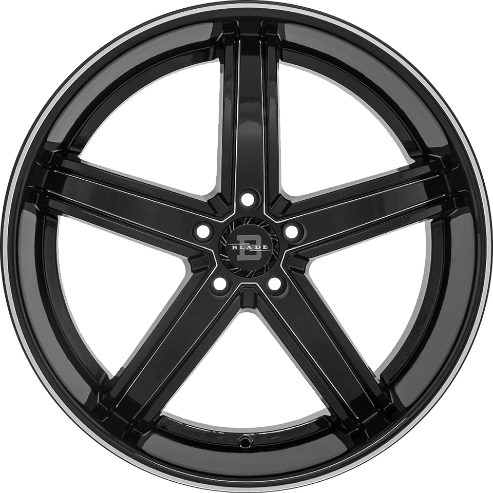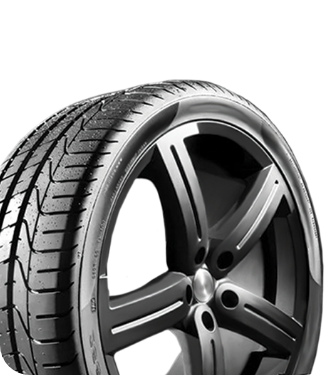

The Evolution of Tire Technology Over the Decades
Safety Tips | 
Tires have come a long way since the advent of the automobile, evolving from simple rubber bands to sophisticated, high-performance components critical to road safety and efficiency. What many drivers take for granted today—quiet rides, enhanced durability, and all-weather grip—is the result of decades of innovation in tire technology.
Understanding the evolution of tire technology over the decades not only gives us an appreciation for modern engineering and helps drivers make informed decisions when choosing tires. Here, we’ll take a closer look at how tires have transformed and what those advancements mean for the vehicles we rely on daily.
1. The Early Days of Tires: Leather to Solid Rubber
The earliest tires weren’t rubber at all but leather bands around wooden wagon wheels. With the Industrial Revolution, tires evolved, and solid rubber tires appeared in the mid-1800s, offering shock absorption for early automobiles and bicycles.
While innovative for their time, solid tires lacked flexibility and traction, making for a bumpy ride and frequent slips. As automobiles grew faster and heavier, it became clear a better solution was needed. These early designs set the stage for advancements in comfort and performance, driving the development of more functional materials.
2. The Arrival of Pneumatic Tires
The next revolution came in the 1880s with John Boyd Dunlop, who invented pneumatic tires—tubes filled with air that provided better shock absorption and flexibility. Pneumatic (or inflatable) tires were softer and more forgiving than rigid rubber tires, significantly improving comfort and ride quality.
By the early 1900s, with the rise of the automobile industry spearheaded by brands like Ford, pneumatic tires became the standard. Over the next few decades, technological advances addressed challenges like punctures by reinforcing the rubber with fabric or steel belts, improving the tire’s reliability. These introductions set the stage for integrating performance-focused design, such as patterns in tire treads to improve traction—a game-changer for urban and rural drivers.

3. The Advent of Synthetic Rubber and World War II
World War II brought a shortage of natural rubber, prompting the development of synthetic alternatives. Using petroleum derivatives, synthetic rubber became a substitute and a leap forward in durability and performance.
By the mid-20th century, tires were a mix of synthetic and natural rubber, offering drivers a perfect balance of strength and flexibility. This innovation reduced wear and tear, extended tire lifespan, and gave birth to the durability drivers expect today.
Another milestone during this era was the radial tire, introduced in the 1940s by Michelin. Radial tires featured a unique arrangement of steel belts, significantly enhancing fuel efficiency and extending tread life. Though the US adopted these more slowly than Europe, radial tires eventually became the industry standard by the late 20th century.
4. The Introduction of Tread and Specialized Designs
The 1950s and 1960s marked a period of specialization as tire manufacturers sought to perfect their designs for varying road conditions. Tread patterns became more intricate, targeting specific challenges like water displacement, snow grip, or improved handling on dry pavement.
Seasonal tires emerged during this period, including snow tires for winter driving and summer tires optimized for warm conditions. This created a new level of customization for drivers, ensuring safety and performance regardless of the environment.
Fast-forward to the 1970s, and all-season tires hit the market, promising year-round versatility without switching between sets. This breakthrough catered especially to everyday drivers and remains popular for its convenience and capability.
5. Environmentally Friendly Innovations
The energy crises of the 1970s pushed tire manufacturers to focus on fuel savings. Reducing rolling resistance—the friction between the tire and the road—became a top priority. Lower rolling resistance meant better fuel efficiency, cutting drivers’ costs and reducing carbon emissions.
Meanwhile, advancements in manufacturing technologies allowed for recycling old tires into new materials, reducing waste. Today, many leading tire brands continue innovating with sustainability in mind, creating products that balance performance with a lower environmental footprint.
6. Smart Tires and the Role of AI
Modern tire technology is about more than just materials—it’s infused with cutting-edge technology to enhance user convenience and safety. Enter “smart tires,” which use sensors and artificial intelligence (AI) to monitor tire pressure, tread wear, and temperature in real-time.
Systems such as tire pressure monitoring systems (TPMS) now prevent accidents caused by underinflation, while advanced materials reduce noise and improve grip across various road conditions. These innovations are just beginning to gain traction (pun intended), and the future of intelligent, self-adjusting tires looks promising.

7. What’s on the Horizon for Tire Technology?
Tire manufacturers are innovating to meet modern demands. Airless tires offer durability, flat resistance, and low maintenance with a unique lattice design. Sustainable materials like soybean oil and dandelion roots replace petroleum-based elements, supporting eco-friendly goals. For electric and autonomous vehicles, tires are designed for heavier loads, quieter rides, and better energy efficiency.
8. The Importance of Regular Tire Maintenance
Advancements in tire technology have improved durability and performance, but regular maintenance is key to safety and efficiency. Check tire pressure and alignment and rotate regularly to prevent uneven wear and enhance fuel efficiency. Monitor tread depth with a gauge or penny test to maintain traction, especially on wet roads. Proper care extends tire life, improves comfort, and ensures road safety—an investment in performance and peace of mind.
9. How To Choose the Right Tire for Your Vehicle
Choosing the right tires doesn’t have to be overwhelming. Consider your driving habits, road conditions, and vehicle specs. All-season tires work for mild climates, winter tires are ideal for icy roads, and performance tires suit spirited driving. Tread patterns, load index, and speed ratings also matter. Check your vehicle manual or consult a tire specialist for guidance. The right tires ensure better handling, safety, comfort, and fuel efficiency for an improved driving experience.
The evolution of tire technology over the decades showcases the remarkable strides made to keep our vehicles safer, more efficient, and more sustainable. Every innovation has paved the way for a more seamless driving experience, from leather bands to airless tires.
When selecting tires for your vehicle, why not use the latest technology? We offer brand-new, high-quality tires in Lubbock. Visit our store or browse online today—you’ll find the perfect match for your ride and budget.





